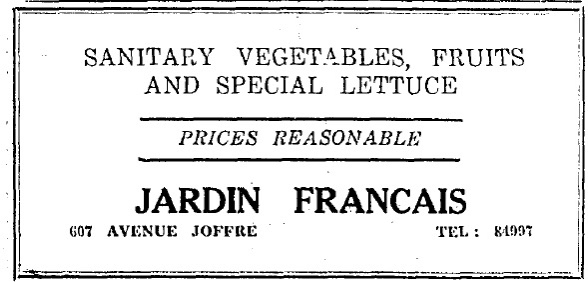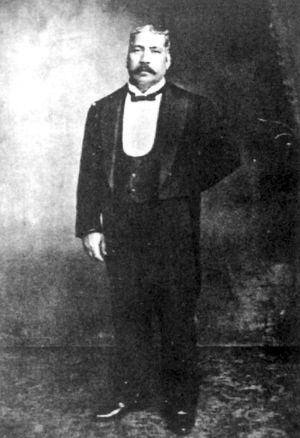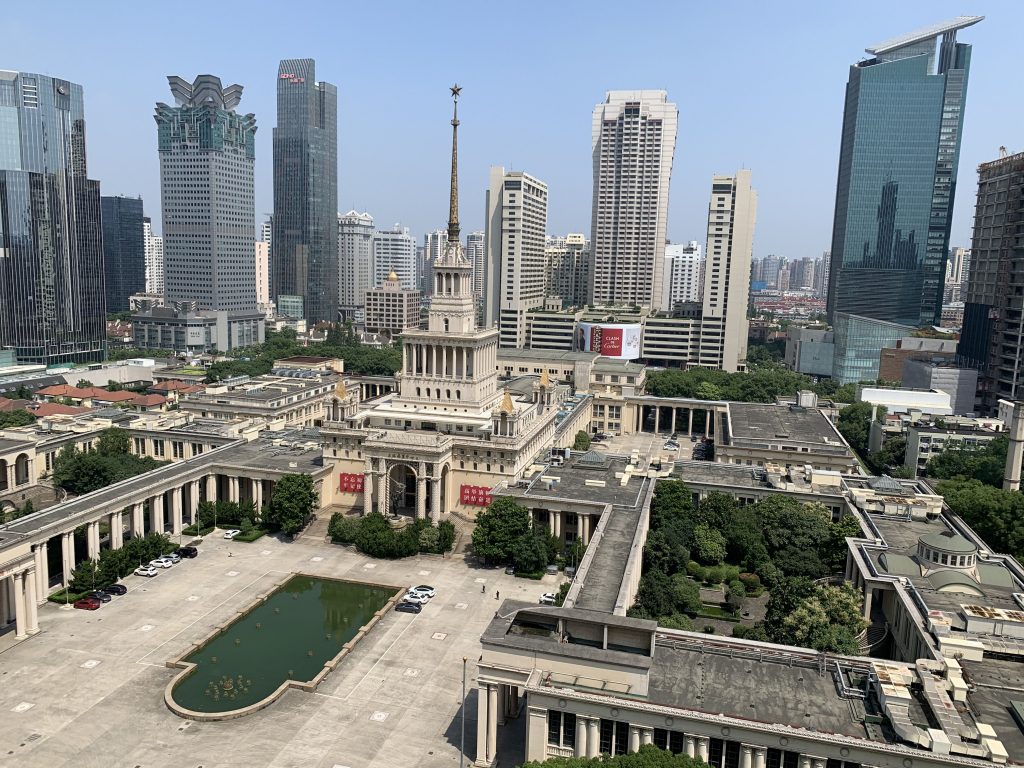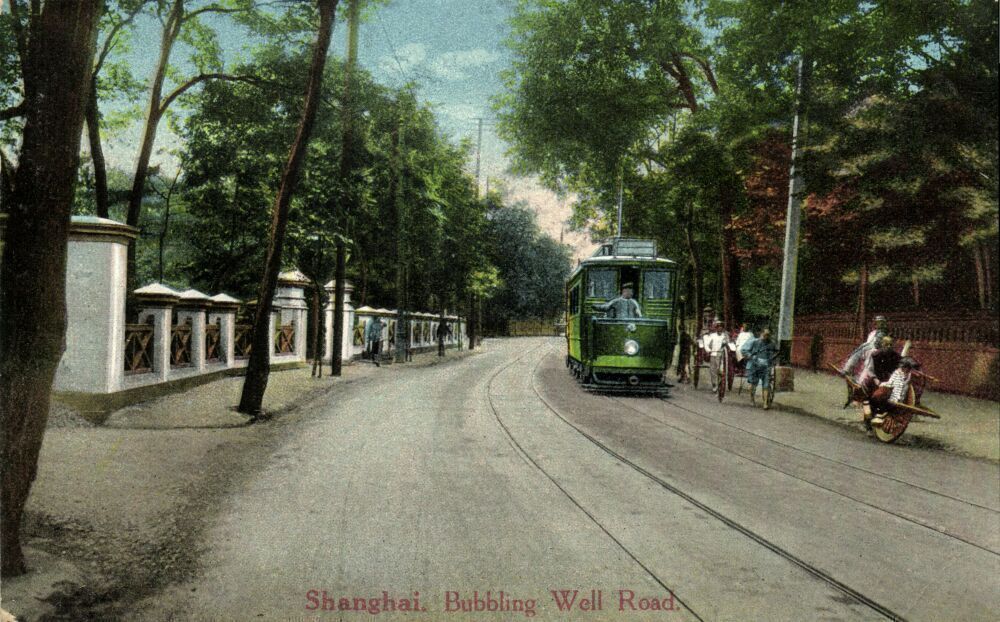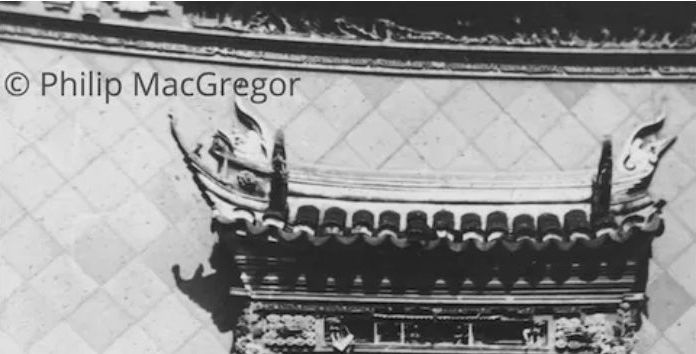A recent post on this blog was focused analyzing a day of Park Hotel accounting. One the pages in the booklet particularly attracted my attention, a receipt from “Jardin Français”.
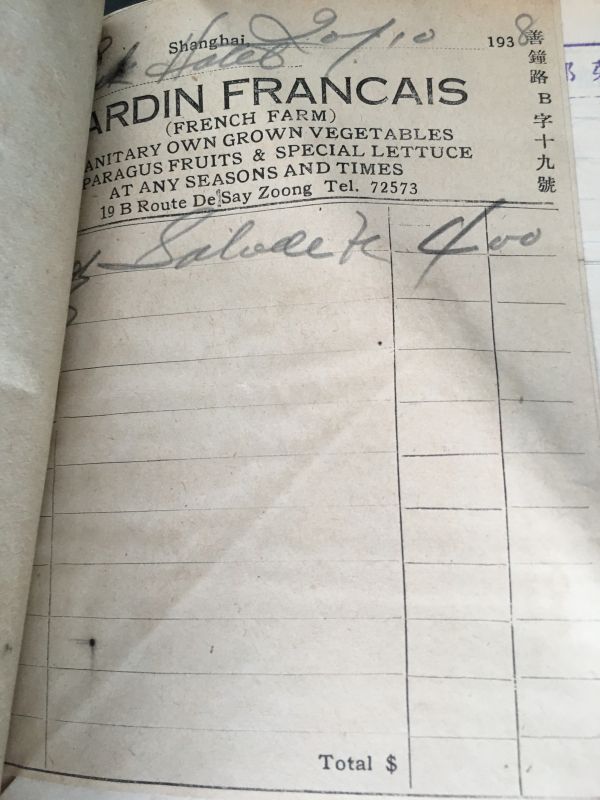
As the subtitle states it, Jardin Français or French Farm, was a market garden in the West part of the French concession. It offered “sanitary own grown vegetables, asparagus, fruits and special lettuces at any seasons and times”. This actual voucher was for chicory salad, and another one was for eggs. This was probably a premium place to get quality western vegetables, serving the hotels and the high level residents, something like today’s organic farming.
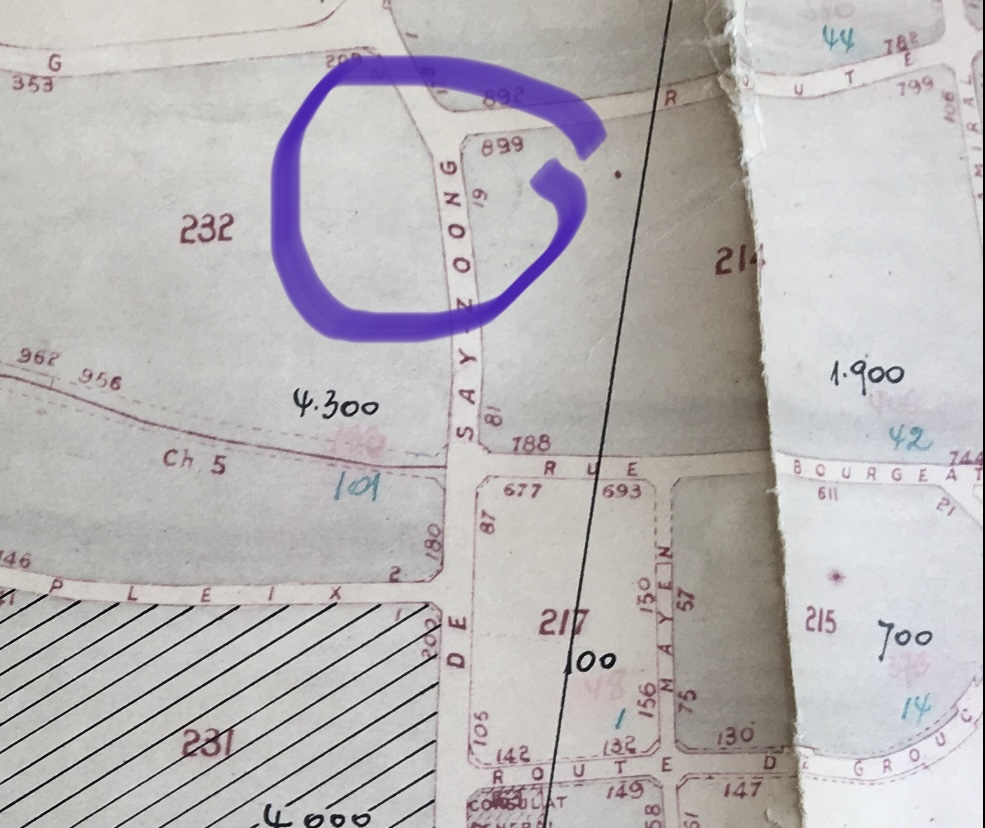
19B Route de Say Zoong is now located on Changshu lu. Above map shows that 19 was just South from the Route Ratard / Route de Say Zoong corner, today Julu Lu / Changshu Lu. It is located on below map from 1939. This was definitely a shop, but not the garden itself, which was probably a few miles away, in the countryside.
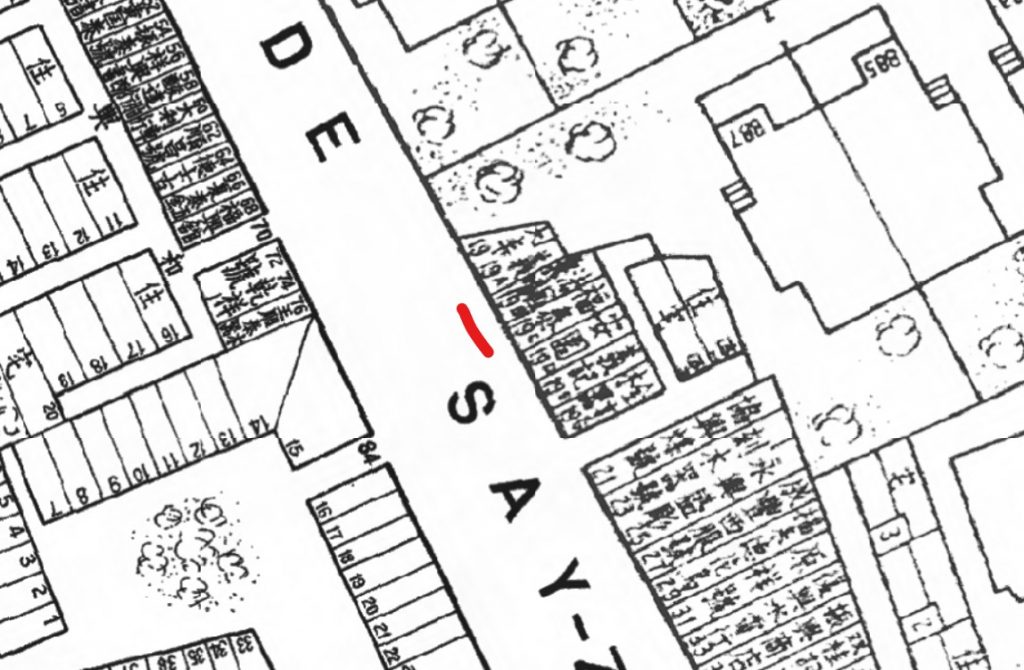
After writing the original post on this topic, friends from MOFBA came with a advertising for Jardin Français at a different address, published in “The China Press” from 9th March 1934.
The earlier incarnation of Jardin Français was closer to the center, and probably moved West along with the development of the city, and maybe (just like today) rents increase. I like the “prices reasonable”, which sound to me like a literal translation of “Prix raisonnables” in French but sounds kind of funny in English.
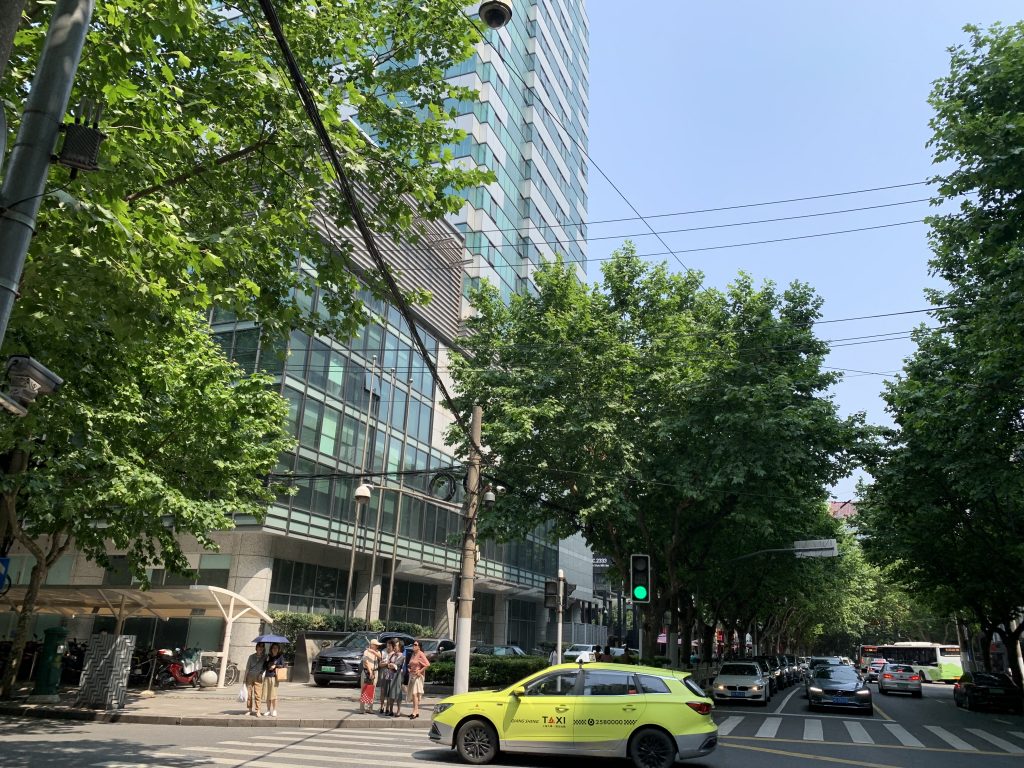
This is the exact same corner, today Julu lu / Changshu lu. On my back it the other side of Julu, Changshu lu 17, i.e. 17 Route de Say Zoong. Numbers on that street have not been changed. The large building is numbered 55 but covers a large area, so it surely encompasses 19, and 19B. This was the location of the Jardin Français shop in 1938. The actual building was probably a 2 story long building with many shops, that is common in Shanghai even today.
